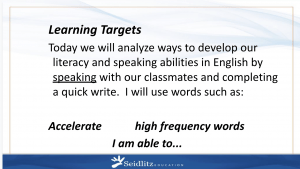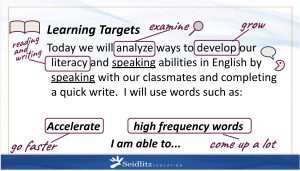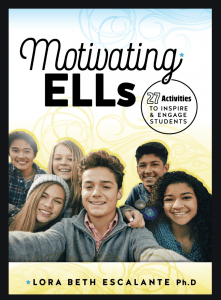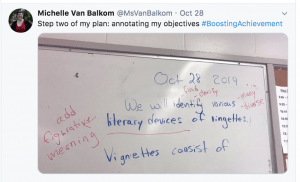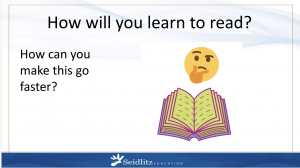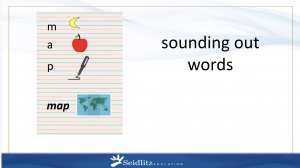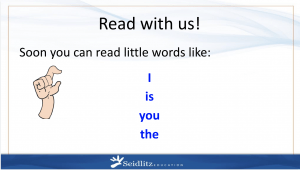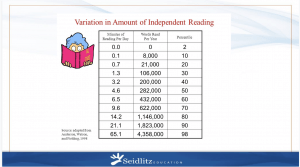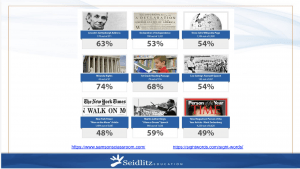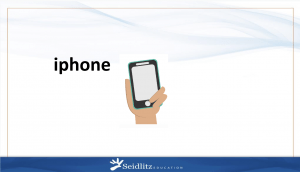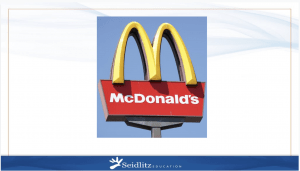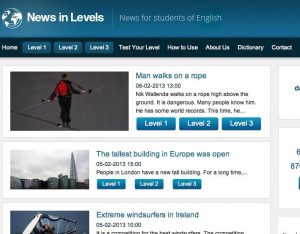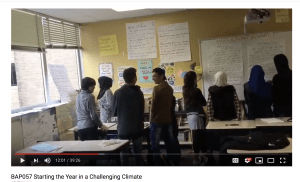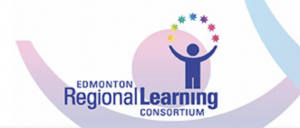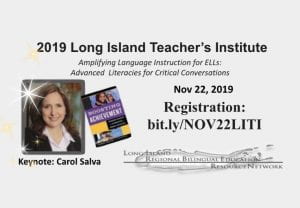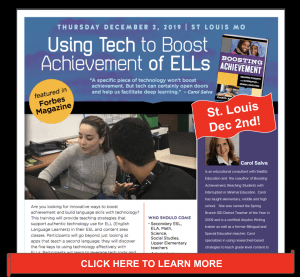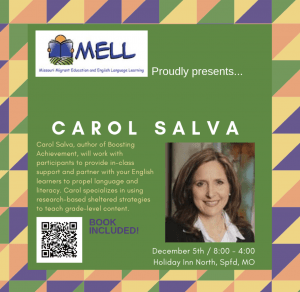You know how to teach a person to read… but how do we explain all of this to the students?
You can listen to this show here or watch the video below.
If you are teaching newcomers, and you DON’T know much about Balanced Literacy, it is extremely important to have an over-arching understanding of it. Check out Episode 60, Teaching Older ELs to Read, to get that information. It is important to know so that everything we do (in whole group, small group, mini-lessons, going over objectives) is delivered in a way that supports our ELs gaining language and literacy.
THIS episode is focused on how to partner with your emergent readers so that they are doing the things that help them become literate in English as soon as possible.
The slide deck I am using is available to you right here. I have pictures of the slides in these notes to give you an idea of what I’m describing if you didn’t watch the video.
I began this show with the objectives I use with the students and I took some time to talk about why I annotate them. The objectives above are an example of how I make content comprehensible. I’ve seen this done a number of ways over the years. This idea is included in Dr. Lora Beth Escalante’s new book, Motivating ELLs.
I am inspired by some of the examples I have seen lately:
Today was the first time I annotated my learning objective with my students! How did I do @MsSalvac??? #JCPSESL @michelleshory pic.twitter.com/AVATar36j6
— Drew Courtney (@mrcourtney_esl) October 22, 2019
Shout out to Ms. Saint Eloi for having a growth mindset to meet the needs of ALL her Ss! Thank you for allowing me to model how to scaffold up to meet those needs! Annotate the objective, choral read, sentence frames, word bank, and structured convos w/peers! @EsolPbc @MsSalvac pic.twitter.com/8maBiUSFNB
— Christy Aliaga (@ChristyAliaga) October 25, 2019
It is worth noting that the students in these classes are newcomers and many are SLIFE (Students with Limited or Interrupted Formal Education.) . Great to see the teachers keeping vocabulary and rigor high:
Recorded myself annotating learning targets with my 8th grade class for a PD on learning targets & teacher clarity. Watching yourself teach can be 🙈but I’m loving this strategy to increase EL’s vocabulary & teacher clarity! #jcpsesl @NewcomerAcademy @michelleshory @MsSalvac pic.twitter.com/yHblRatyoN
— Ms. Lange (@ml_teachesl) October 16, 2019
The following slides are what I use as I work through this lesson, I use a lot of visuals and gestures to explain the concepts to the students.
They MUST understand that sounding out/deciphering words is different from comprehension and analysis.
Of course sounding out words is an important skill.
But they need to also realize that it is critically important to recognize high frequency words and sight words.
I explain to the students the why and how they’ll be able to do this.
I tell them to read with support and you will get multiple exposures to high frequency words soon. Every day you understand more English. If you get comfortable with the gist (not 100% comprehension), you’ll be able to acquire new words and phrases. You won’t be overwhelmed. Key here is that they are in a classroom where students are allowed time to turn and talk FREQUENTLY. This is good pedagogy and also necessary for ELs to negotiate meaning often using technology and native language.
The following slides illustrate how much of what we read are little bity high frequency words that come up often!
These two slides are helpful to show students the power of reading as much as possible. The more you read, the more you CAN read:
The following slides also help the students realize that they may know more words than they realize:
The main focus of this show is to help you see that students can help accelerate their progress if they have the metacognitive awareness of what is going on as they gain language and literacy. We are dealing with older learners in my experience, an older learner can partner with you more effectively than a 4 or 5 year old learning to read.
Sight word lists are effective when students understand the language of the list. They can also be effective as students learn a new language. But we should realize that older students bring rich background and life experiences which help when they are making connections to what you read with them. They should know that they can gain a great deal of high-frequency words and sight words as they track print with their eyes when they read with support.
In the episode I mention newsinlevels.com as one of our favorite sites to help students read on their own. We need to help students gain the ability to decipher text and then be ready with a lot of choice for them to read with text that is scaffolded for them. News In Levels is great for this:
I hope this episode helps you understand how our students, even our SLIFE students, are gaining literacy. They will tell you that they key is to READ MORE. And they also understand why it is working. They have lots of buy in!
Thanks for taking time to go through these notes. The slide deck is right here if you’d like to make a copy for your use.
I appreciate everyone sharing with me!
I hope to meet up with you! Come to Twitter (@MsSalvac) or Facebook.com/SalvaBlog to join us in the sharing.
Please reach out if I can support you in your district.
I’d be happy to chat with you about our training, coaching, speaking and consulting services! I am at carol.salva@seidlitzeducation.com
Or maybe you can join me at one of the places below!

Colorado TESOL Nov 8 & 9, 2019
ERLC in Edmonton, Canada on Nov 19, 2019
November 22nd in Long Island at the LI Teacher’s Institute
Using Technology with ELL on Dec 2nd, 2019
Boosting Achievement in Springfield, MO on Dec 5, 2019
